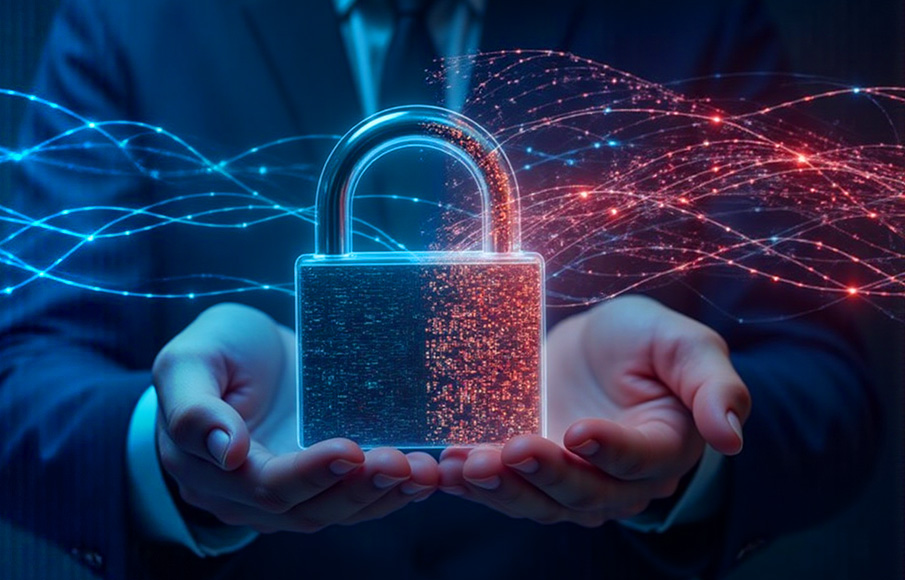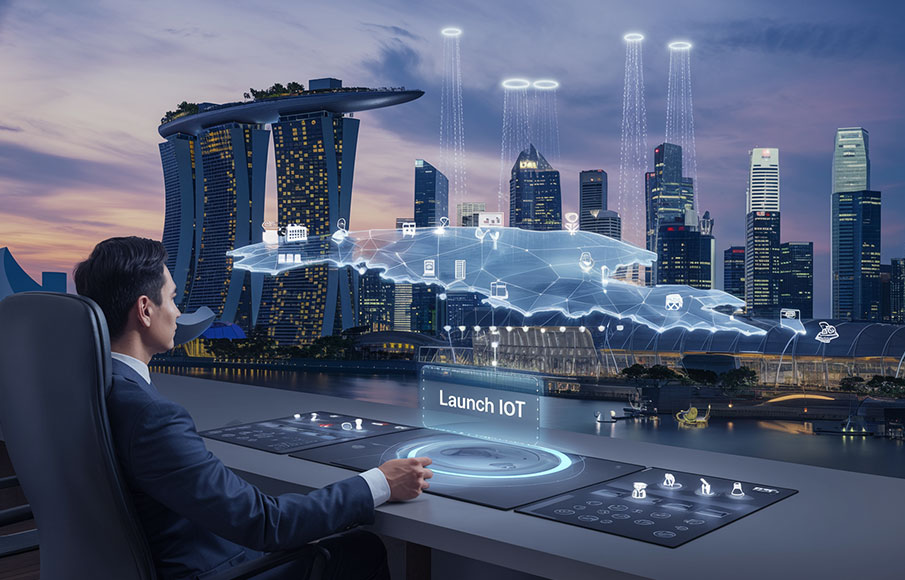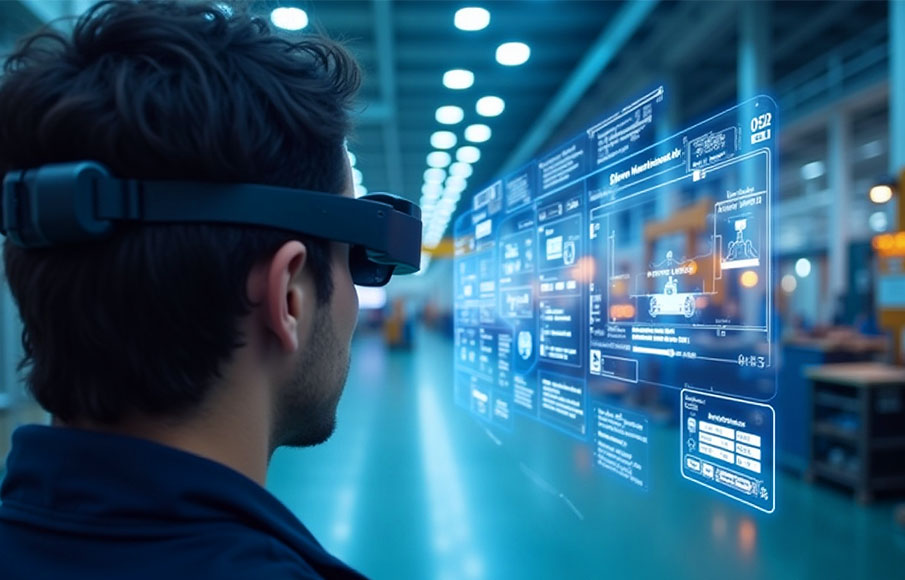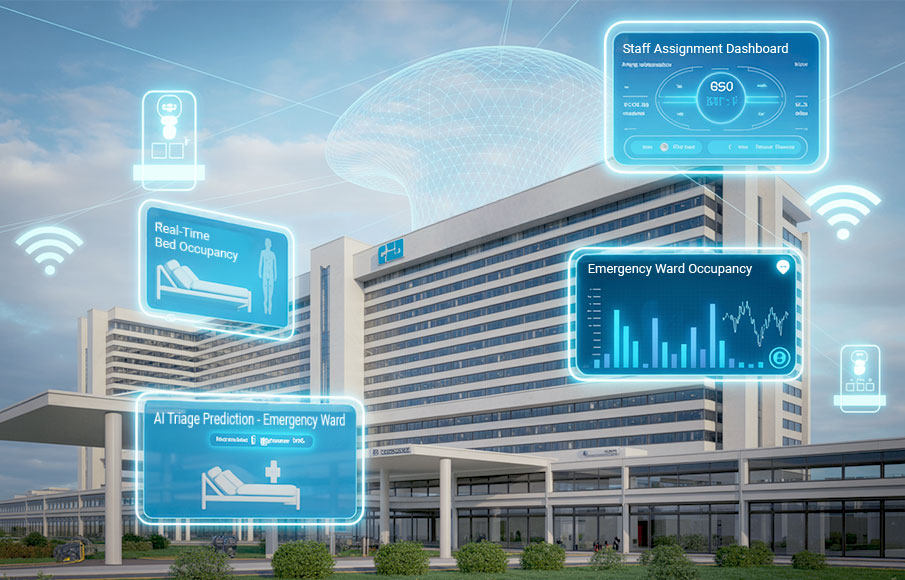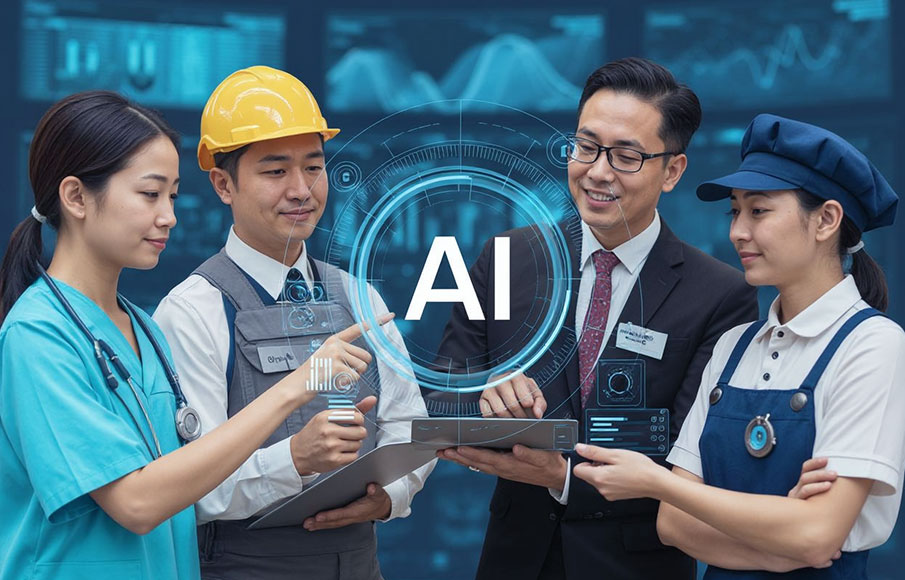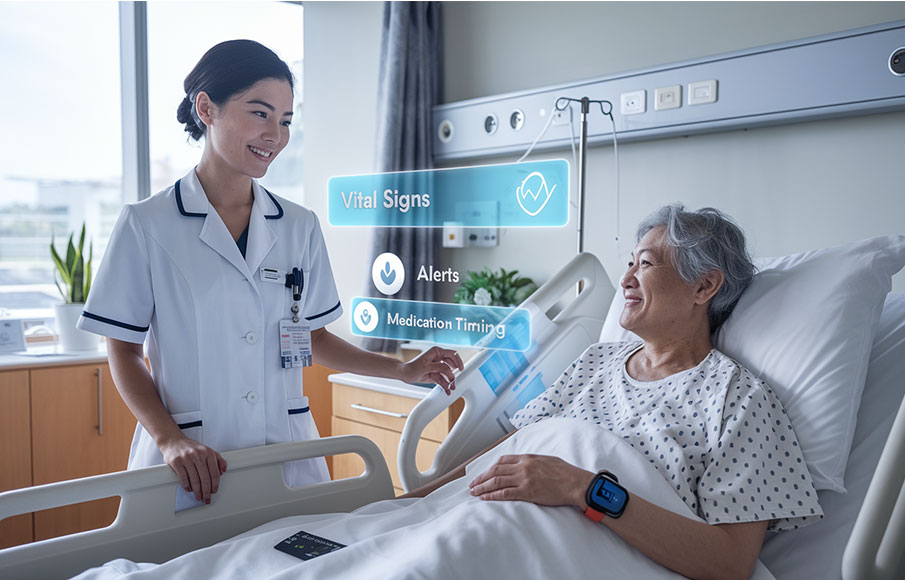Internet of Things (IoT) in Healthcare
- 01 October 2021
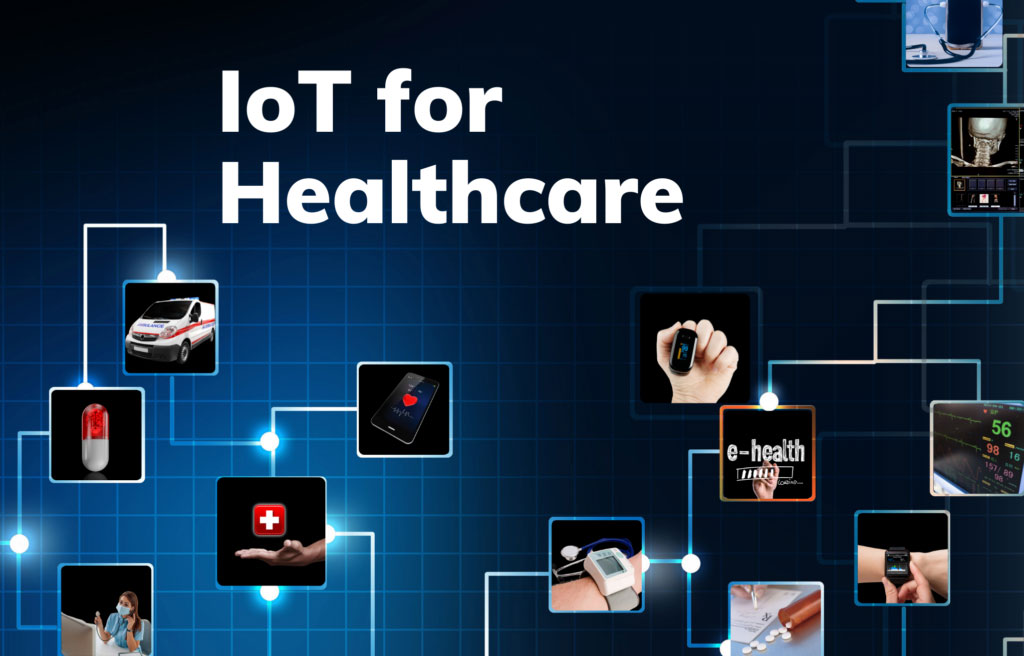
Internet of Things (IoT) in Healthcare
Internet of Things, commonly referred to as IoT, is a term that has become much more popular recently but actually goes way back to the 90s. The functions of IoT have been present and practiced since the 1960s, but the term “Internet of Things” was not introduced until 1999. IoT can be encountered everywhere. In fact, it is dominating the world as it exists in almost every environment and can even be experienced on a daily basis either knowingly or unknowingly. We know that the Internet of Things is a revolutionary concept, but what exactly is it?
What is IoT?
Internet of Things (IoT) is a giant network that involves various elements that work together to collect and share information, as well as to process data, to produce actionable results that are useful for different purposes. It is a catch-all term that refers to the interconnection of objects or “things” such as electronic devices, digital and mechanical appliances, and the like. IoT collectively pertains to the system of processes, and everything else involved, that take place whenever everyday objects or special gadgets are connected to the internet and to each other for a specific purpose.
How Does IoT Work?

In a nutshell, the Internet of Things is basically just inanimate objects communicating with each other with a common goal in mind. To easily grasp how IoT works, simply think of it as the process of leveling up a basic thing by transforming it into a much more useful tool through the use of the internet and smart connectivity. Instead of doing tasks manually, IoT allows people to automate actions for the purpose of convenience, efficiency, and productivity.
The devices involved in the process are categorized into two: General devices and sensing devices. General devices are the gadgets or appliances that serve as the main component when it comes to data hub and information exchange. Sensing devices on the other hand are composed of sensors and actuators that are responsible for performing in-device functions like the measuring of humidity, temperatures, light intensity, and other activities that gauge particular circumstances. The results extracted from the sensors and appliances are received as actual data by a processing node or gateway. Once the information has been processed in the node, a back-end network known as cloud will receive the processed data. The cloud is the IoT’s network that serves as the platform for all general devices to interact and communicate with. At this point, information can now be stored securely and passed onto the next step for analysis. This phase analyzes the data gathered from the general and sensing devices so it can produce a solution that will be of great help to companies utilizing the technology.
The Benefits of Internet of Things in Healthcare

IoT by itself is already very purposeful and innovative. However, integrating this smart process to vital sectors like healthcare is life-changing. From patients to providers and many more in between, Internet of Things has been continuously improving the day-to-day routines of people involved in the ecosystem:
IoT for Patients: IoT introduced medical wearables and other equipment to help improve people’s overall health by producing helpful data and accurate results. With IoT, patients are given the option to continue their recovery at home, significantly reducing the amount in their hospital bills.
IoT for Healthcare Professionals: The Internet of Things simplifies a lot of processes that happen in the healthcare sector. Thanks to IoT, remote patient monitoring is now possible. The network provides healthcare workers real-time access to patient data and health data, making remote monitoring easy and practical; it made tedious manual tasks much easier by automating it to achieve faster results and deliver quick responses.
IoT for Researchers: The big data that comes from tons of general devices that are connected to the IoT’s network make a great reference for researchers to use in interpreting solutions related to healthcare and other industries. Collating data from different areas across the globe is made easier, thus, expanding the reach and capacity of researchers when conducting large-scale studies.
IoT for Healthcare Insurance Providers: Insurance providers are given the chance to level up its claims processes, be more productive and efficient with their internal and external workflow, come up with enhanced insurance products, and assess risks and evaluate policy statuses much more easily.
IoT Solutions for Healthcare
The Internet of Things made it possible for the healthcare industry to come up with actual solutions that are concrete and functional. The improvements brought about by the growing network opened opportunities for medical facilities and other businesses in the sector to actively upgrade its performances and services through IoT-connected devices. With IoT in play, revolutionary medical equipment is continuously being used and introduced to the masses, tremendously changing the way people from across the world manage and respond to illnesses.
IoT’s impact on healthcare reflects on various touch points:
1. Tracking and Monitoring Purposes

As IoT primarily relies on sensors to trigger data from physical devices, it is helpful for tracking and monitoring purposes. IoT provides accurate and possible real-time information on a particular device’s location and status so this feature of the network makes IoT the optimal choice when performing tasks that require tracking and monitoring info.
For instance, the use of smart thermometer which is an IoT-based device, allows aggregation of data collected across different locations. The collected data gets reflected in a map that shows possible clusters of Covid-19 outbreak. Smart thermometers are connected to the network and into an app or a software that displays the gathered and analyzed data from the sensing devices.
On the other hand, wearables and home monitoring systems are in place to perform the same function by keeping track of the elderly’s activities at home. The purpose of this is to alert a caregiver or a medical professional in case a sudden change happens or if there has been no detected movement for a long period of time.
2. Health Wearables

Technology birthed many smart devices that can be used to monitor a person’s health status. The innovative inventions made available in the market allowed people to rely on easily-accessible devices such as smart watches and other wearable gadgets to consistently monitor and improve one’s own health. Wearable biosensors use IoT to monitor patient’s vitals like heart rate, breathing rate, and body temperature so doctors can gather accurate insights on their medical conditions even when they are outside of the care setting, providing valuable information on how daily activities affect the patient’s conditions.
Smart watches are designed to be very portable because they are equipped with capabilities that monitor everyday health levels such as blood oxygen and pulse rhythms. This device is essential in diagnosing irregularities in heart performance especially in people at risk of heart failure. Other common functions of health wearables include sleep cycle monitoring and activity tracking, both of which use Internet of Things to actively and effectively retrieve results.
3. Smart Medical Devices and Equipment

Another outstanding IoT solution is the availability of handy medical devices and equipment which people can actually use independently even without the direct supervision of a health professional. These devices help patients who have chronic illnesses to reduce medical costs by staying and continuing treatment at home. Smart inhalers are beneficial to patients with asthma or chronic obstructive pulmonary disease (COPD). It can track medication use, alert patients to take medicines, provide advice to improve patients’ inhaler techniques and adherence to medication plans, and provide insights to causes of symptoms. Smart inhalers can also alert doctors when patients are not following their medication intake, and this is useful especially in the era of Covid-19 when doctors have difficulties making regular contact with patients.
Automated insulin delivery systems (AIDS) work in conjunction with continuous glucose monitors (CGM) that constantly monitor blood glucose levels to determine the amount of insulin needed. AIDS will continuously deliver insulin and the amount is adjusted based on the glucose level measured by CGM. Through IoT’s network, patients suffering from diabetes can safely receive medications that are of the correct measurements. Diabetes makes a person’s bodily reactions sensitive so it is important that the glucose levels are closely and constantly monitored. Through the help of IoT devices, diabetic people can live a better life, one that doesn’t experience much stress when it comes to the management of the disease.
There are also mood monitoring IoT devices which work by tracking changes in heart rate, blood pressure, and even movement of the eyes to detect a change in the patient’s mental state. This can help psychiatrists collect more data about the patients’ condition, rather than relying on self-reported symptoms. Mood monitoring devices provide more accurate data which greatly impacts a person’s treatment plan.
4. Monitoring of Environmental Conditions

Environmental conditions are external factors that affect patient care. In health facilities such as hospitals or clinics, it is important that everything inside the perimeter are working well. In a single setting, a large percentage of patients are likely reliant on medical equipment that require power or internet connectivity. With IoT, mechanical and electronic issues can be prevented if it is being monitored and maintained religiously. To avoid preventable mishaps, the use of IoT must be strictly implemented.
When it comes to patient recovery, having an environment that fits the patient’s physical needs and requests is important. Some people’s health get triggered by certain factors such as rooms with overly hot or cold temperatures. IoT devices can capture real-time information on the air quality, temperature, and lighting within a healthcare facility. With this, the facility can make adjustments to ensure optimal environmental conditions. It can also notify staff of door closure issues, water intrusions, or other hazards that may pose a threat to patient health and medical supplies.
5. Diagnosis and Treatment

Apps are in place to allow patients to consult a doctor remotely, while the doctor can diagnose their condition and prescribe medication at the comfort of their own home or clinic. With Covid-19 still present, this scenario is being widely used today by many people in order to prevent infection. IoT helps doctors and other medical professionals by providing crucial data on the patient’s health. Aside from convenience and accuracy, IoT also helps in expediting processes that usually take longer time to get completed. In healthcare, time is important so IoT bridges the gap that occurs in manually-done tasks which only bring inefficiency.
There are also ingestible sensors which can measure stomach pH levels to identify the source of internal bleeding, helping doctors to have an accurate diagnosis of conditions. When dealing with internal problems, it is essential that the treatment is based on accurate examinations and remarks.
A more advanced IoT medical device would pertain to the use of robotics when performing medical procedures. Through the Internet of Things, small internet-connected robots can be placed inside the human body to perform surgical procedures that are challenging to be done with the use of human hands. This innovation provides opportunity to patients with illnesses that are seemingly hard to treat by doctors who are in facilities that are not using the advantageous technology of IoT.
6. Training

Medicine concerns the lives of actual human beings. Being in an environment where health is crucial, it is important for medical practitioners to be able to gain proper extensive practice before fully engaging in the field. This can be hard to do without the support of IoT. IoT, along with VR and data analytics, can simulate a mock care facility or a procedure center where healthcare professionals can go for their training to familiarize themselves with the right steps to take in a safe environment. This practice will immensely improve one’s ability to perform complicated medical procedures without having to compromise a patient’s health. A fully-equipped training ground for medical students and professionals will help in honing their skills and ability to make decisions based on certain situations.
Challenges to Be Addressed
Though the Internet of Things or IoT is an emerging network and technology, just like other ventures, there are still some challenges that need to be addressed. When dealt with properly, IoT can be the perfect solution to almost every affair that concerns both civilian people and businesses from all parts of the world. IoT may come with some reservations but its overall impact would be revolutionary. Some challenges would be:
Privacy and Security of Data
IoT stores and handles a lot of data. To securely process these, especially those that have sensitive information, the platform must be safe and secure. Companies who decide to make use of IoT’s benefits should partner with a service provider like SPTel that provide secure data storage in local data center with clean pipe network that provides real-time alerts for DDoS attacks as well as on demand cyber security services.
Non-uniform protocols hinder data aggregation
Since IoT encompasses an extensive area, there can be instances where some elements are deemed incompatible. When making use of IoT, businesses should conduct due diligence before choosing which gateways and networks to utilize in order to avoid issues brought about by the lack of uniform protocols in the IoT space.
Too much data to drive accurate decision making
It’s easy for incapable gateway keepers to drown in too much data during the process of data aggregation. To prevent this from happening, companies should ensure that the network they are acquiring is capable of storing, processing, and analyzing big chunks of data. Proper decision making relies on a steady and streamlined process that happens during data mining and analysis.
High costs for healthcare providers and patients
Internet of Things gained popularity because of its true efficiency and benefits. That’s why it is understandable that the usage of it can be costly especially to companies who wish to integrate its advanced technologies and methods to their day-to-day work process. Patients who would like to avail IoT devices should also expect that the price tag on it can be a bit higher since it runs on a highly-intelligent system.
How to Go About Implementing IoT in Healthcare
IoT is a long-term investment that will continuously provide support and services to the benefiting company. Anyone who desires to integrate IoT in their firm’s internal or external operations should have at least taken the essential steps needed before engaging with a provider. For IoT to be fully maximized, its features and functions should be aligned with the company’s partner network to ensure that every detail can be carried out by the gateway once the actual Internet of Things process is already being implemented.
Here is a brief step-wise guide on how to constructively implement IoT in a company that exists in the ecosystem of healthcare:

Step 1: Identify the pain points of the company
Institutions in the healthcare industry face a lot of issues which affect operations, sales, and service. IoT will always be purposeful no matter where it is placed but knowing the exact reasons why a company needs the support of IoT’s network is essential. The first step is to identify the pain points because this will be the fundamental basis of the entire system.
Step 2: Locate the areas where IoT can be useful
Align the identified points with the areas where IoT can be fully maximized. Knowing where the gaps are will allow the network to move along its direction, precisely targeting the problematic regions whilst keeping track of the imperative moves that should be taken in the later part of the process.
Step 3: Establish objectives and long-term goals
Ultimately, the integration of IoT in a healthcare-related company should be headed towards a specific goal. It is easy to get lost along the way when objectives are not set. This step is one of the most crucial things that needs to be done before implementing IoT. With a clear set of goals in mind, the building process will be much easier. The roadmap for IoT implementation is almost fully dependent on both short-term and long-term goals of the company. This step will determine which path and process the IoT network should take.
Step 4: Assess and decide which infrastructure partner will best be able to support you
Assessing the digital services provider is necessary because not all infrastructure partners can help jumpstart your IoT plans. Choose a provider that can help you to:
- Reduce the complexity to manage multiple data protocol with a ready platform so that various devices can all be managed through a common portal
- Cut down on heavy upfront investment requirements with ready solutions that can be consumed “”as-a-Service” instead of having to build and manage your own systems
- Speed up your deployment with a one-stop solution that combines IoT Connectivity, Device Management Platforms and Compute Resource
- Reach out to the right IoT sensor providers to reduce time spent on sourcing
Scale as your needs increase with digitalized services that allow fast and efficient provisioning of additional sensors or compute resource as and when you need it.
Step 5: Create a comprehensive plan
With the prerequisites ready and set up, a comprehensive plan will be easier to map out. This final step will determine every detail, purpose, and approach that will be relevant during the entire implementation and management process. IoT serves many purposes and functions especially for use cases so outlining every part is important to the success of IoT integration.
Conclusion
The Internet of Things plays a major role in healthcare. Being able to jump in on the trend is beneficial not only to the institution but also to everyone involved in that particular space. With IoT’s eminent benefits, more and more companies and individuals are engaging and supporting the progress of IoT. IoT devices are definitely a game-changer in the healthcare sector, allowing the mass to experience a smarter way of dealing with their everyday health.
In order for your IoT deployment plan to succeed, it pays to have the right infrastructure partner who can help jumpstart your IoT journey without you needing to commit to heavy upfront investment.
With a one-stop, award winning, IoT deployment solution that comes with the gateway, common device management platform and a ready computing resource, SPTel is well placed to help accelerate your digital transformation. Engage SPTel for scalable, reliable, and affordable IoT-a-a-S solutions, along with edge cloud computing for responsive device performance.


